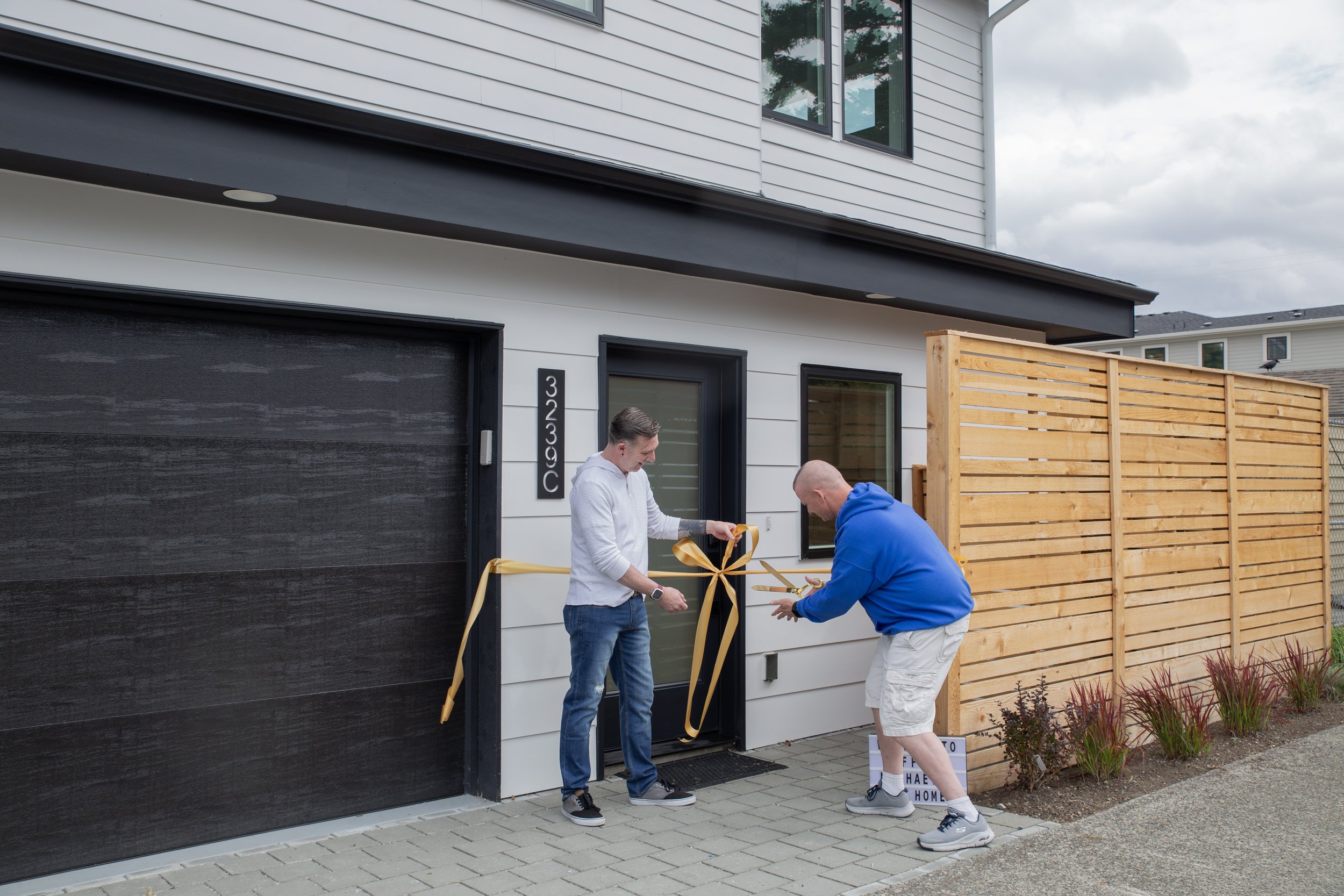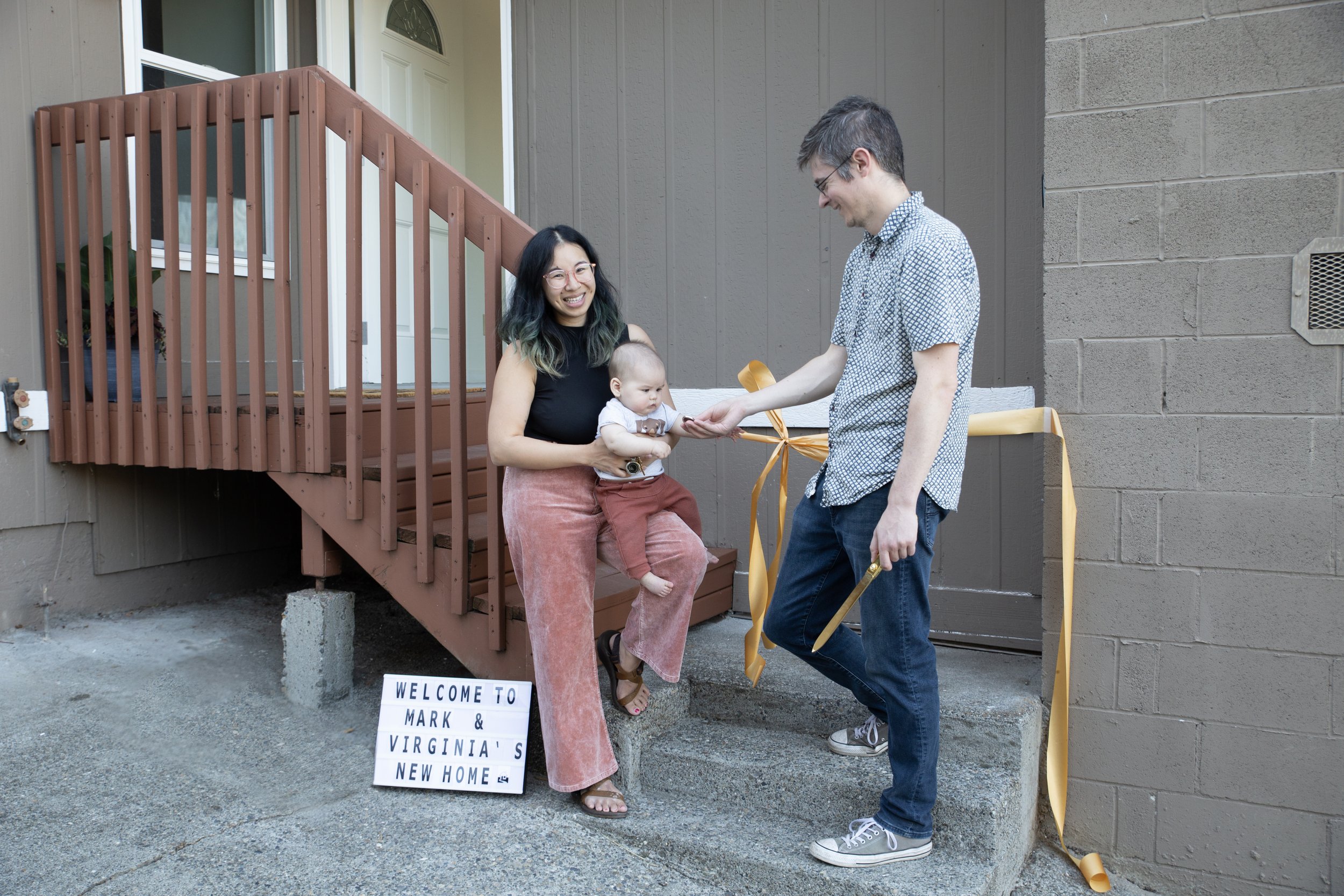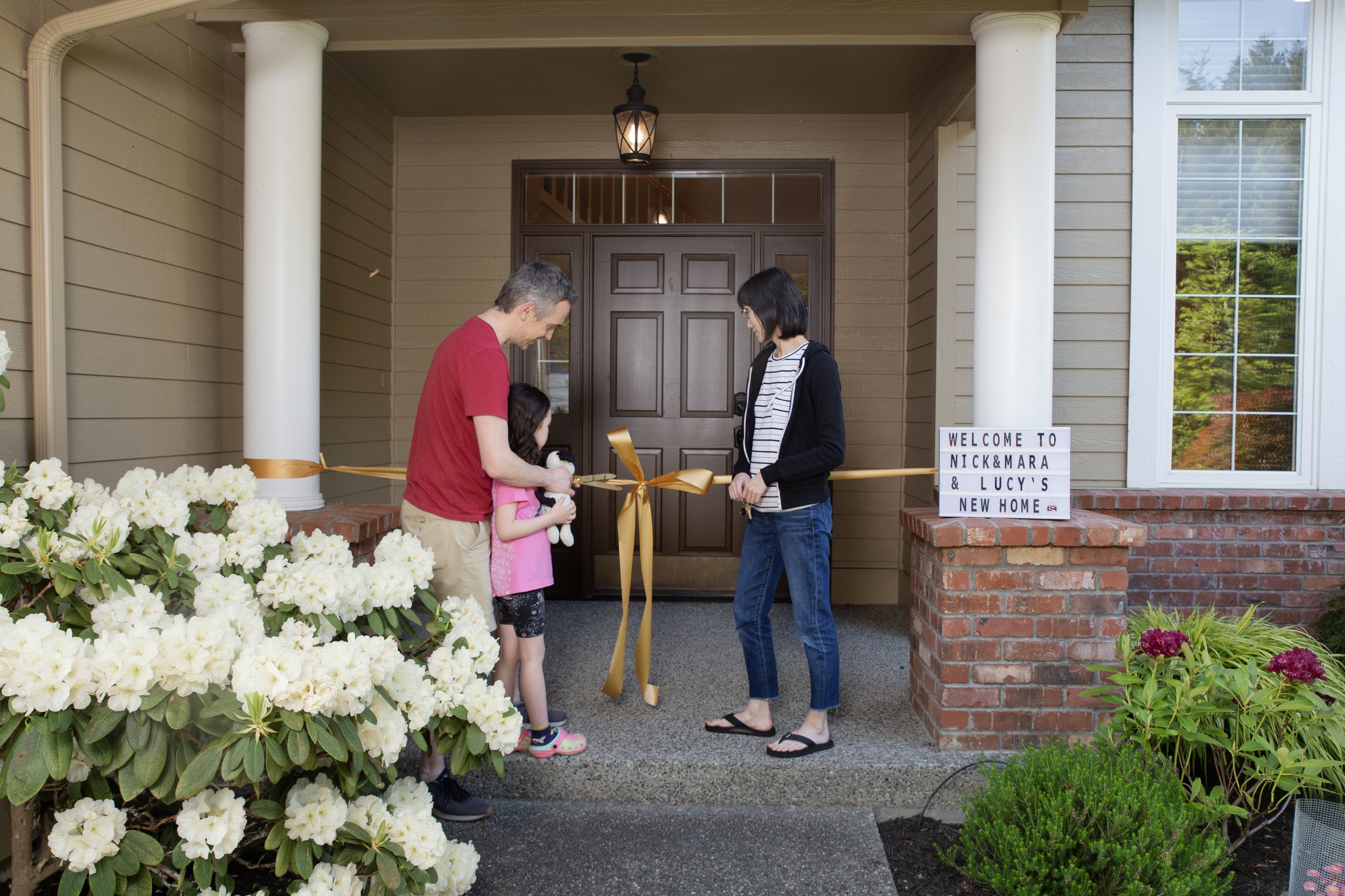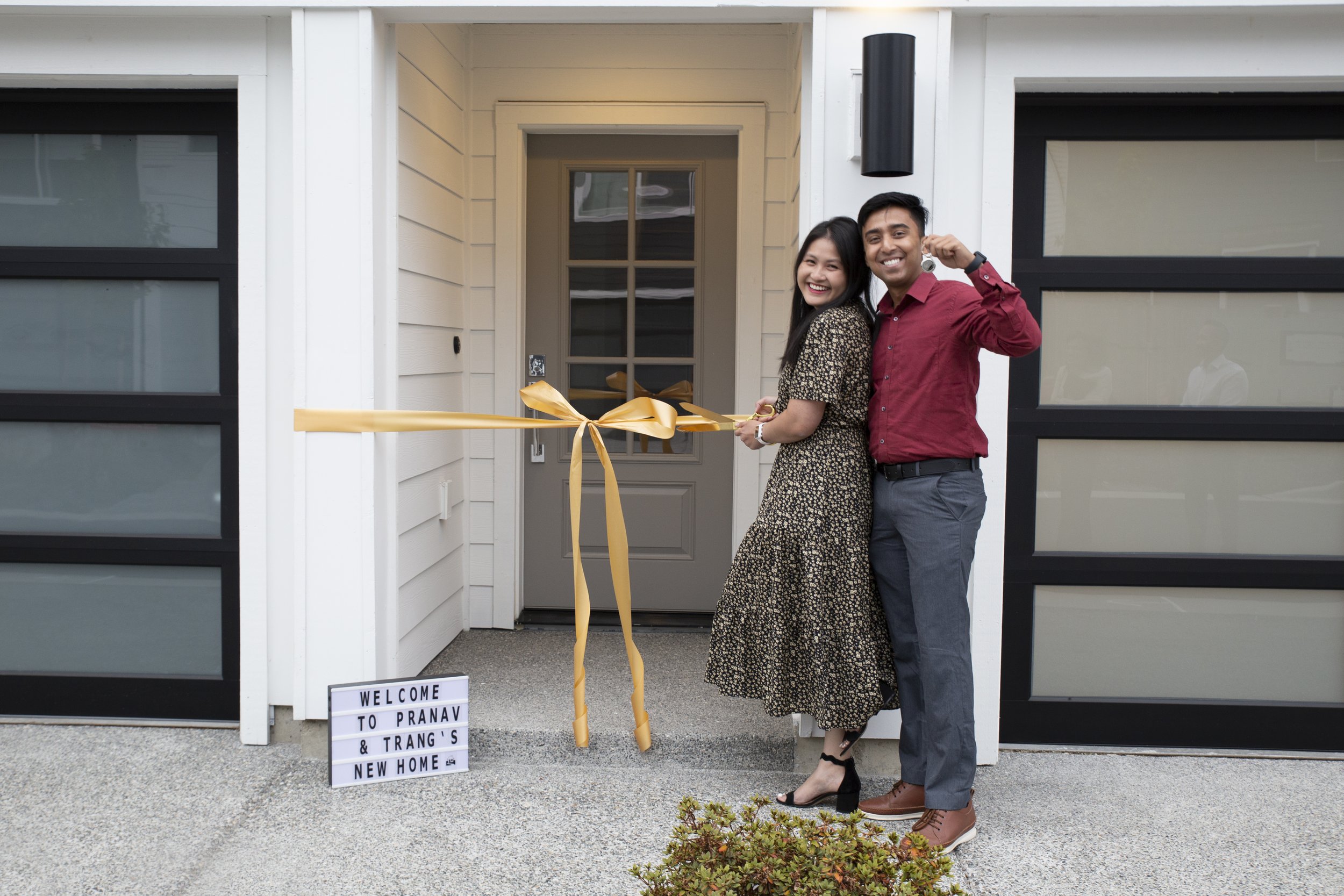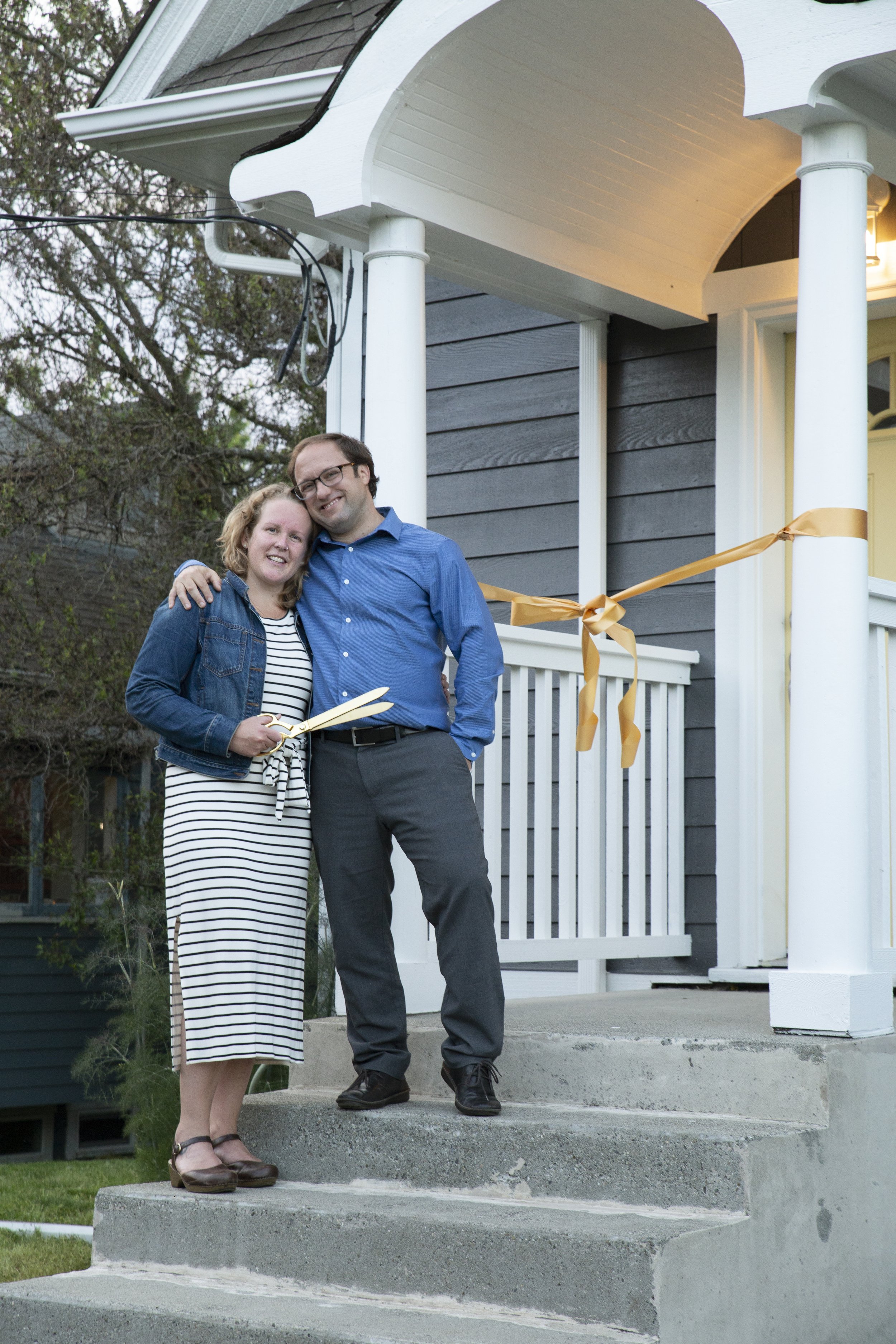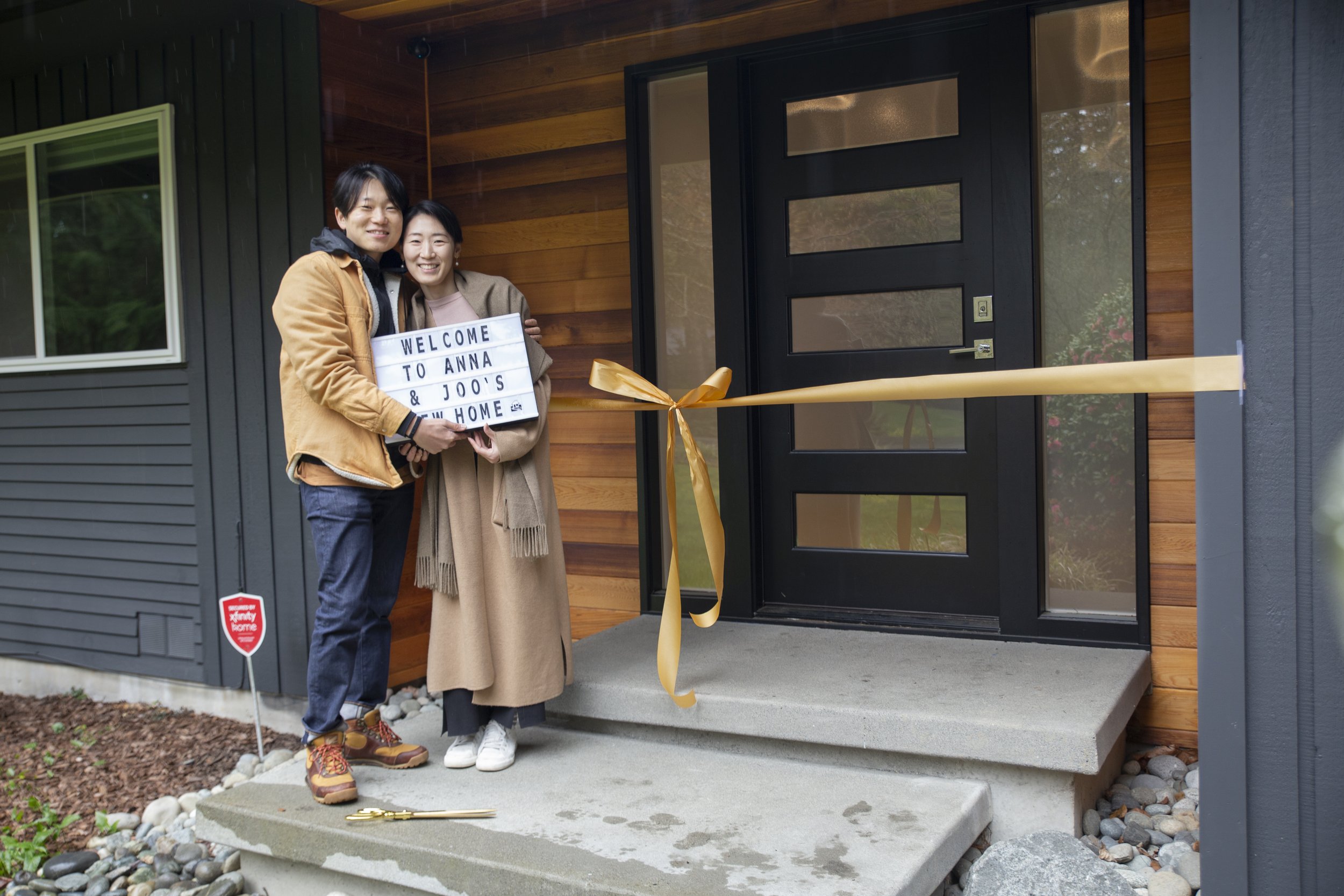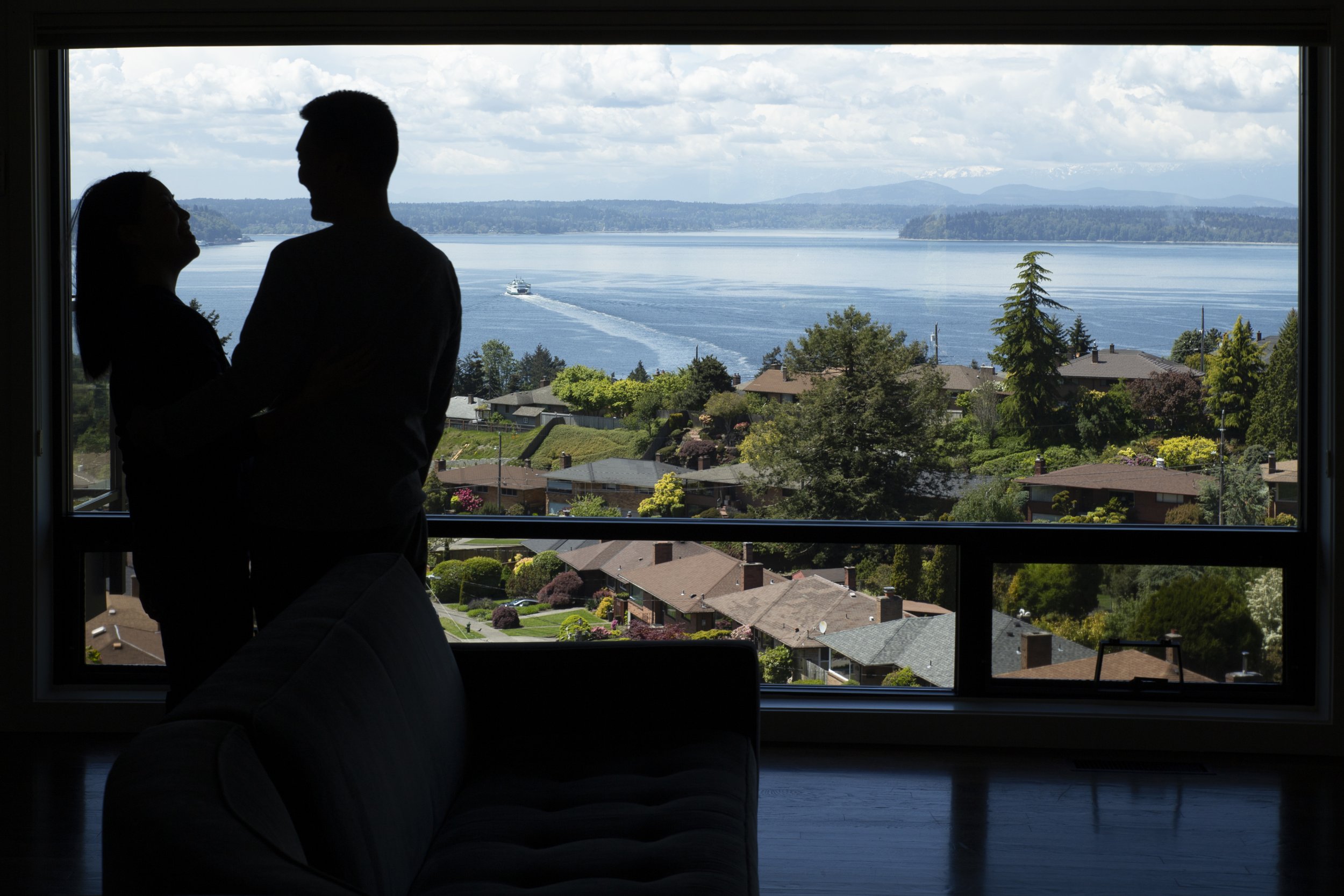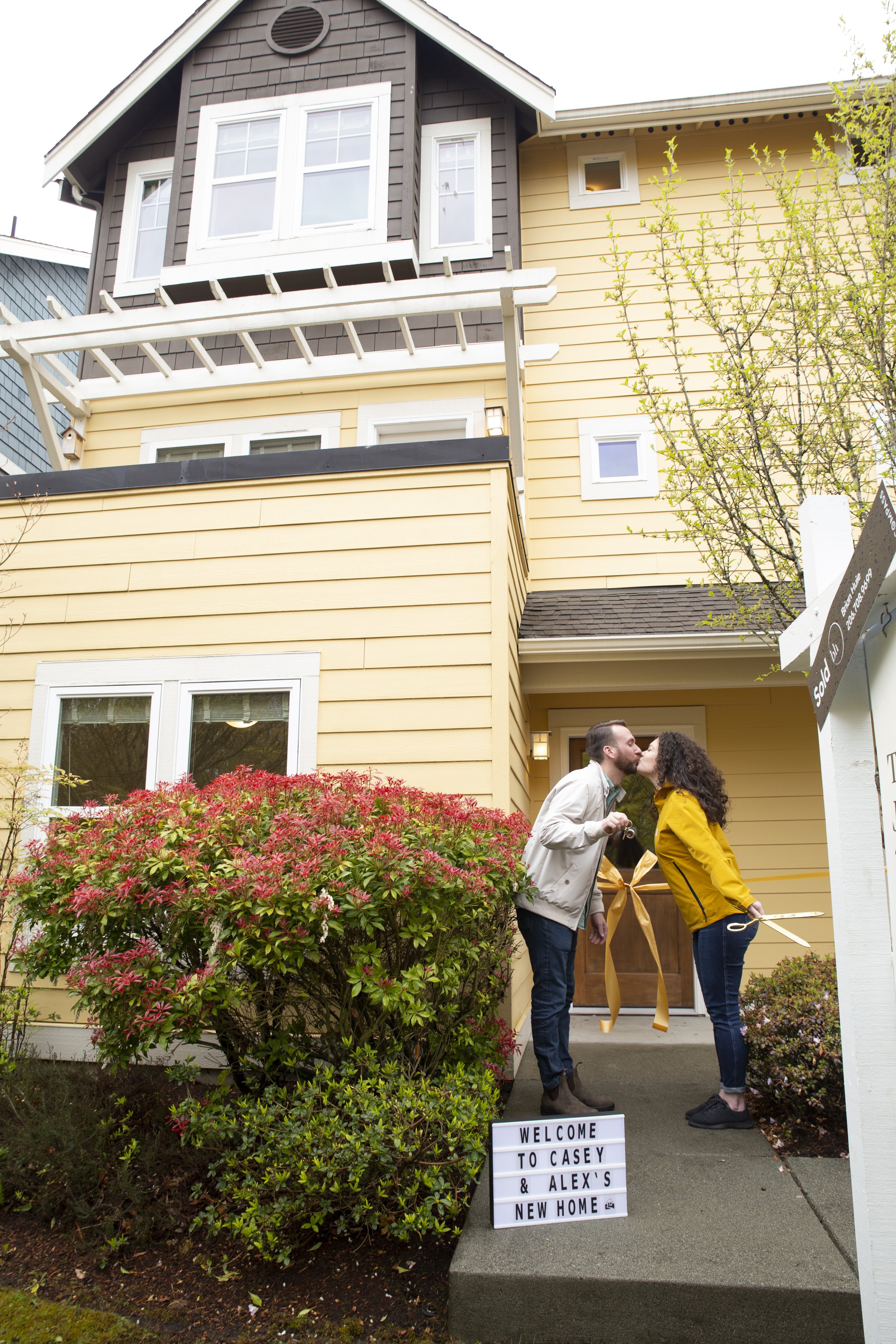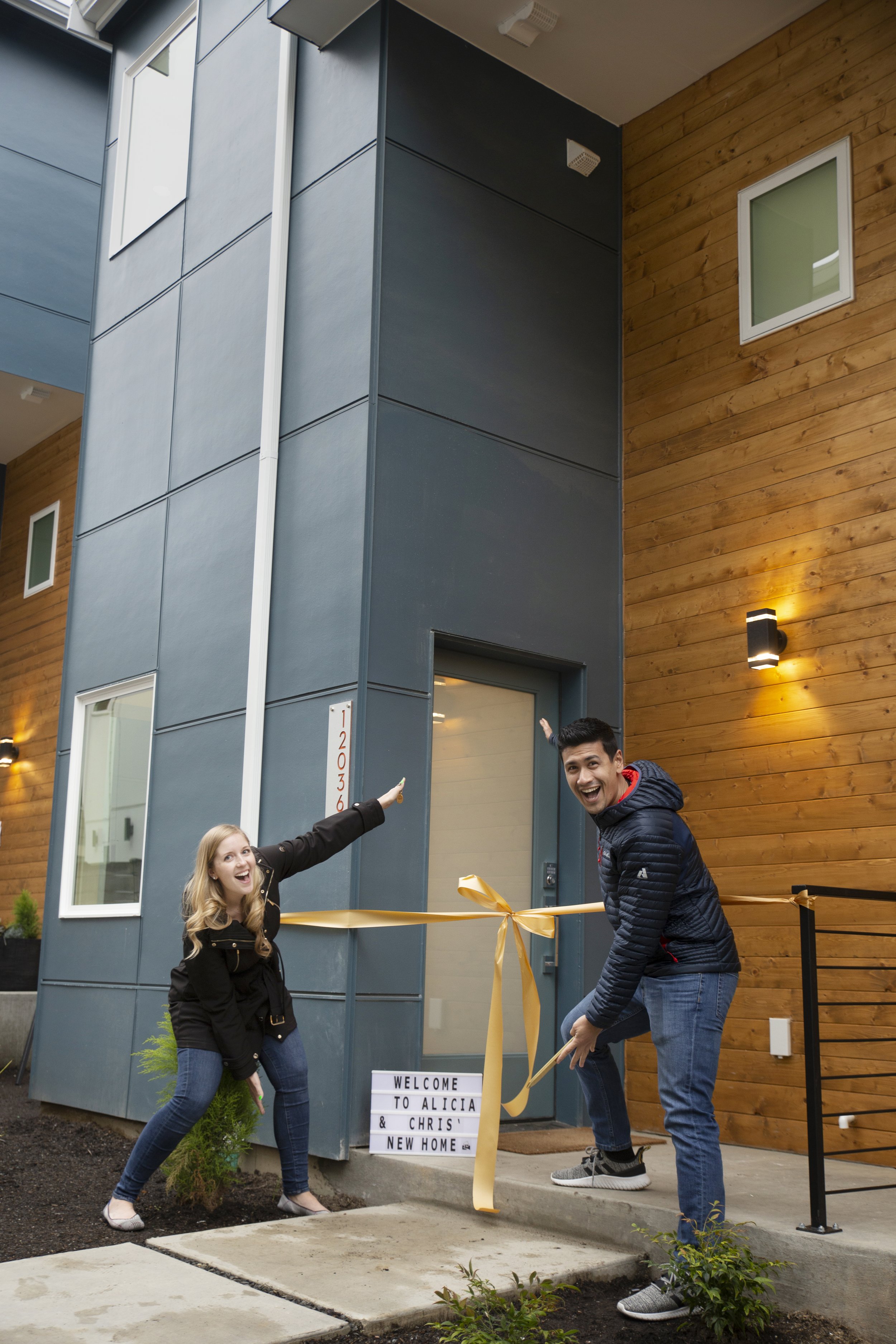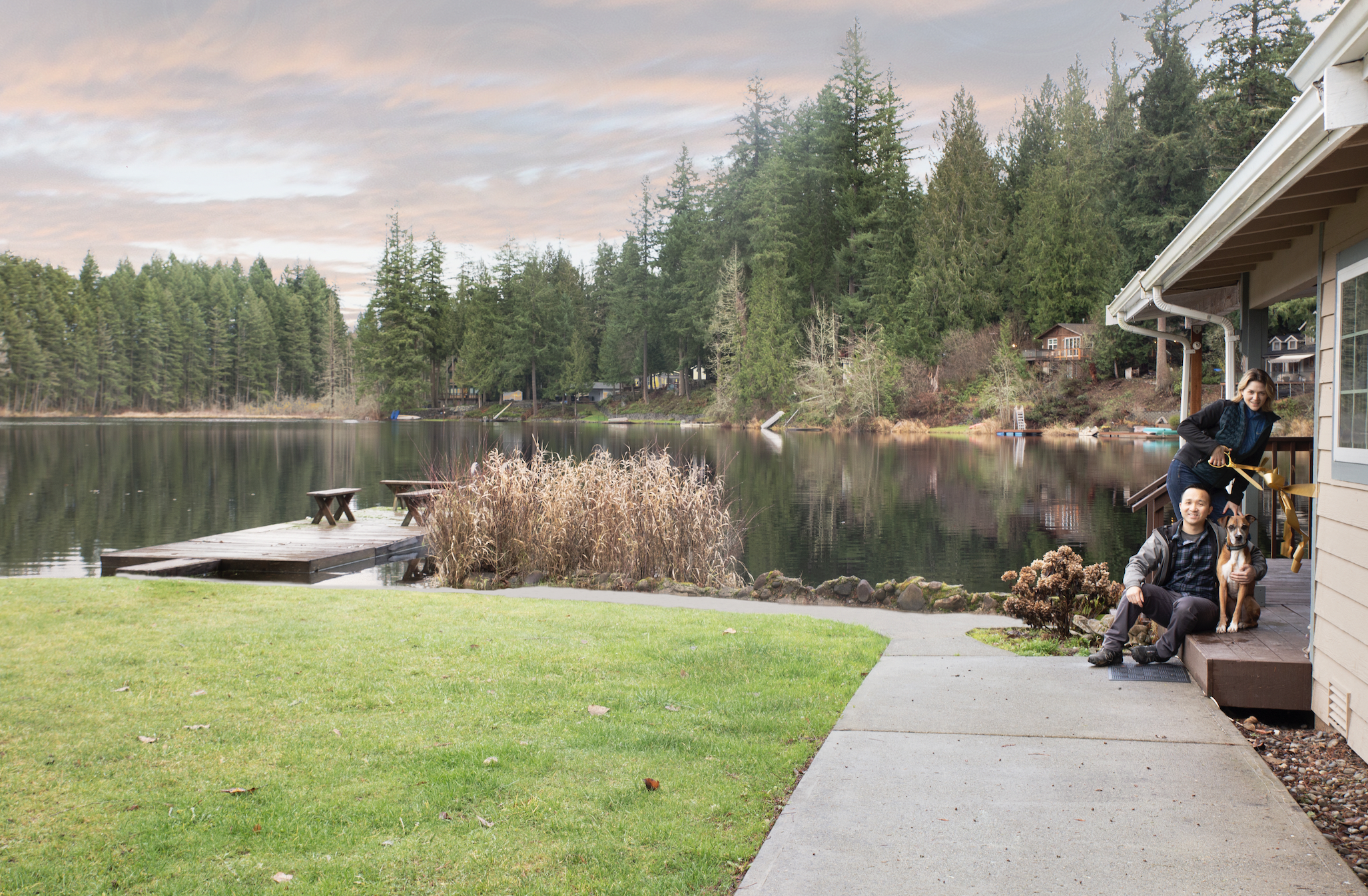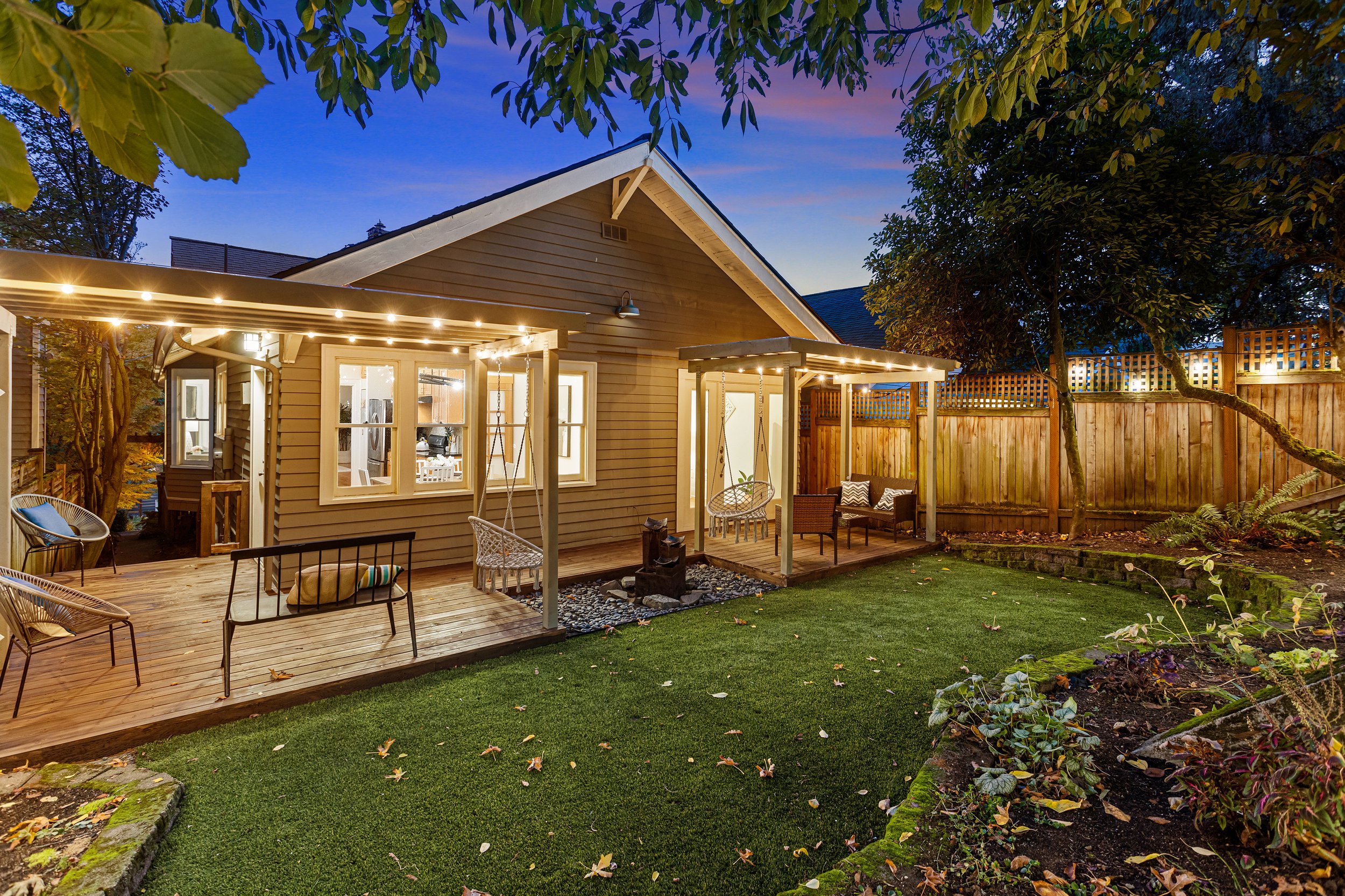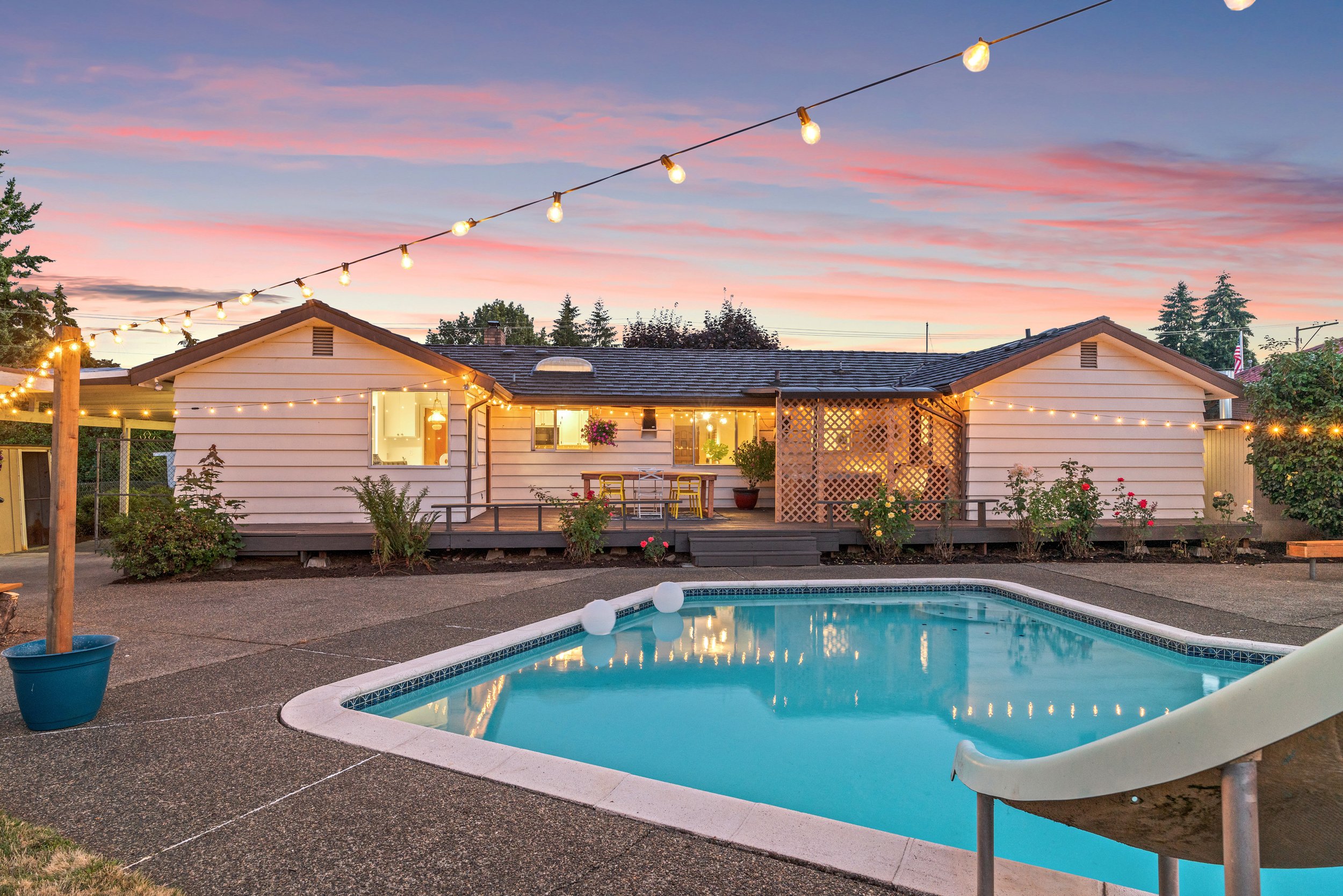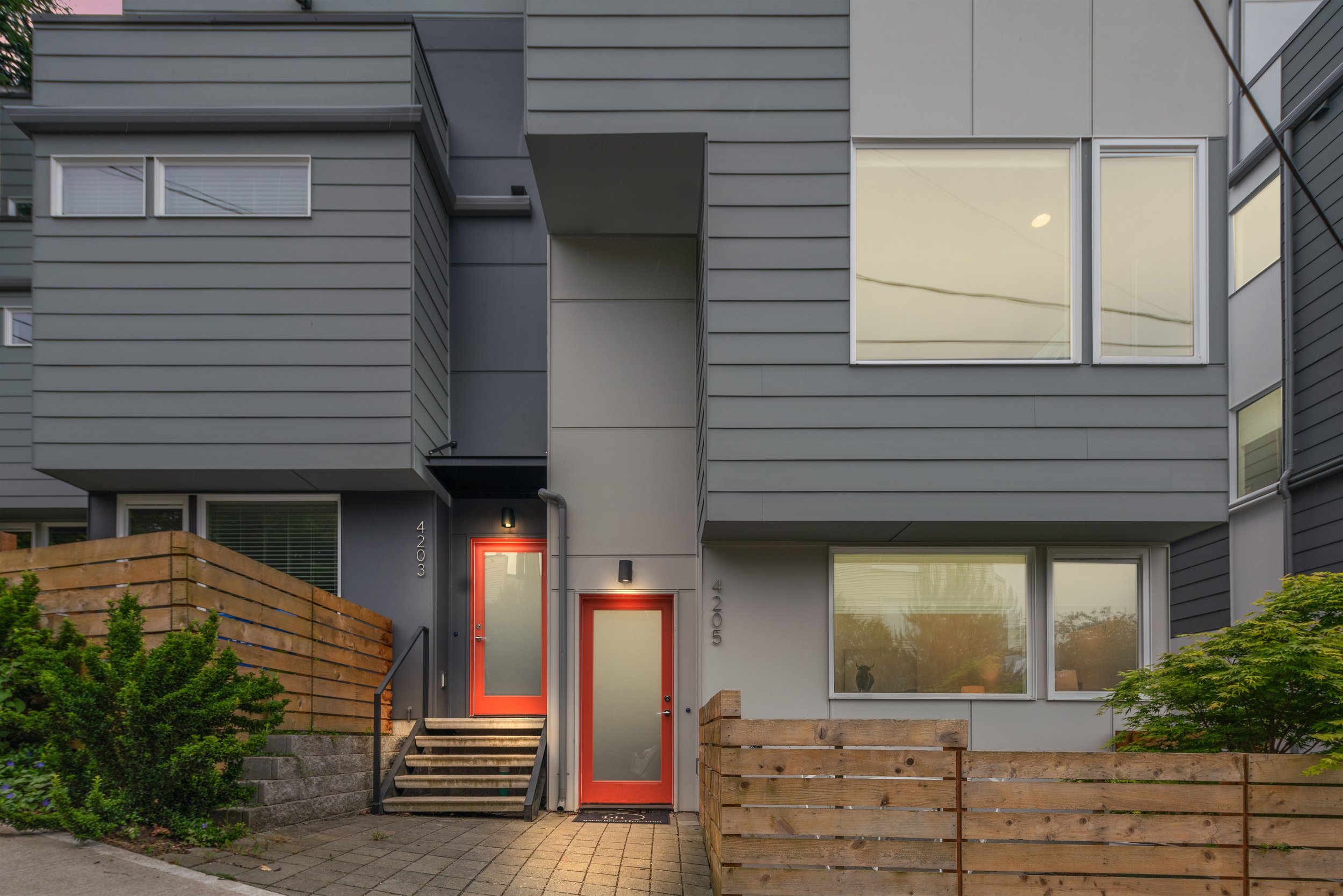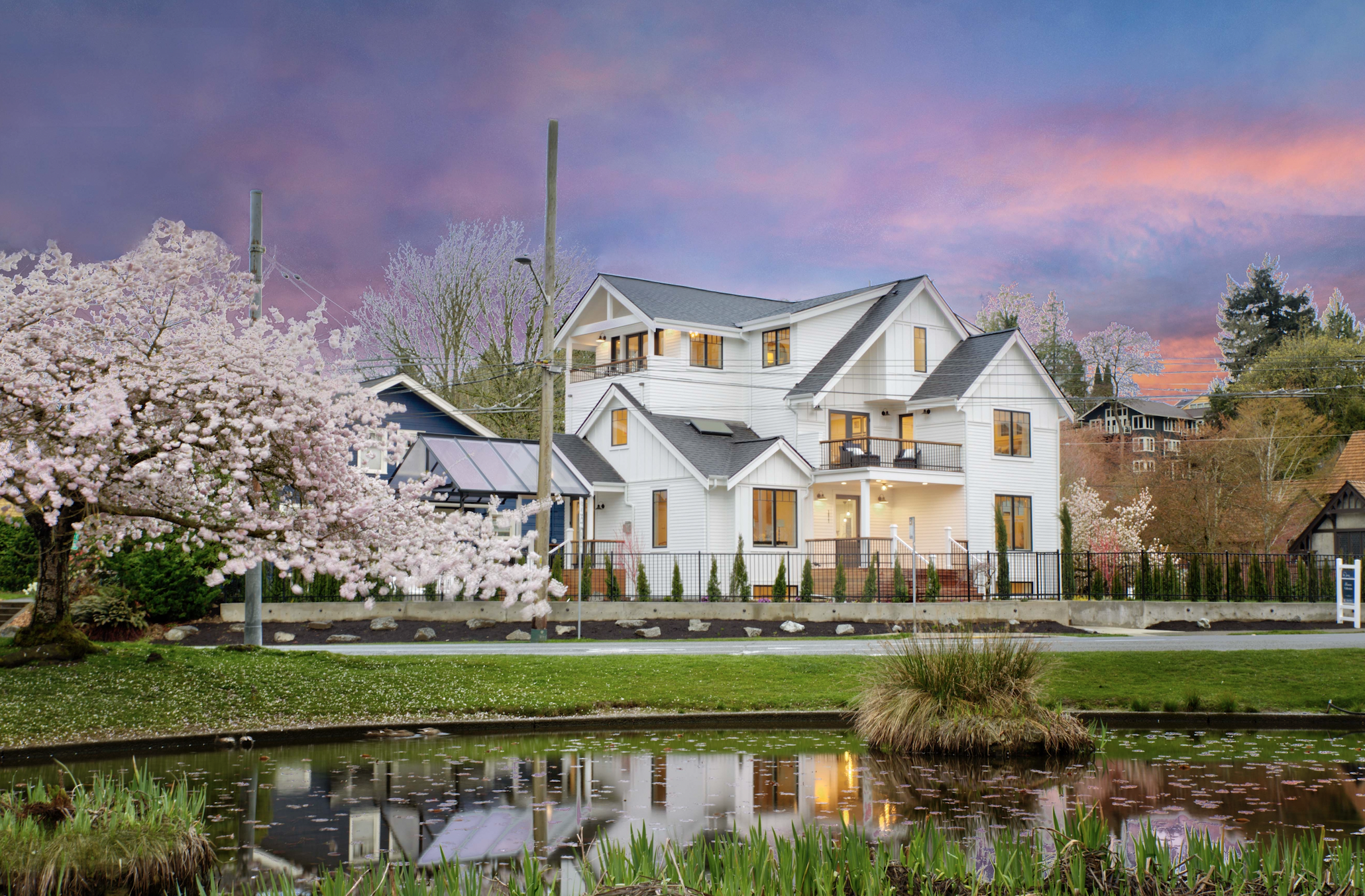Types of Flooring
Renovating your home can be costly, but in some cases certain individual updates (or a few select updates) can dramatically breathe new life into a home, negating plans for a major renovation. One of the biggest changes you can make is updating flooring.
Learn about different flooring options, and pros/cons below, as well as reasons to consider keeping or modifying your existing flooring.
Solid Hardwood
If your home already has hardwood floors, you may be in luck! Keeping them may not only save you some money, but offers the advantage of a timeless, easy to to modify piece of beauty. There is some maintenance required, but I would advise considering keeping them in place if you are not moving any walls or building any add-ons. A fairly inexpensive way to update them is to apply a new stain (or go with no stain at all) when refinishing your floors. Professional refinishing will cost much less than the purchase price (not to mention installation) of another flooring type. A popular option for homes with hardwood floors that will offer a fresh look is to refinish the floors with no stain for a neutral color palette. One of the best benefits solid hardwood floors have to offer, is that you can simply refinish them in the future with a new stain for that era’s color palette, and your home will look fresh all over again (and any scratches will be gone). Solid hardwood can be refinished many times, and they will likely long outlive you! As for homes that don’t already have solid hardwood, they are expensive to install, but some hardwood purists may elect to install them if their home doesn’t already have solid hardwood. Because they are susceptible to water damage, they should not be installed in bathrooms and laundry rooms. When selecting solid hardwood floors, note that the product will need to sit inside the house to acclimate to the temperature and humidity for about a week prior to installation.
Engineered Hardwood
For hardwood purists who don’t want to incur the expense to install solid plank hardwood, engineered floors are a great option. Both the product and installation are significantly lower in cost than solid plank wood floors. The floor features a thin layer of hardwood bonded over a high-quality plywood substrate. It’s as durable as solid hardwood flooring, however most engineered flooring does not have the ability to be sanded and refinished. Some higher end engineered floors will have an extra thick “wear layer” that allows it to be refinished 1-2 times in the future, which can prolong the lifespan. Engineered floors will nonetheless last a very long time if well cared for. We recommend using a polish like Bona (the easiest type to apply, and great for those who don’t want lots of chemicals in their homes), every few months to protect your floors and make them look (almost) new again. When selecting engineered floors, note that the product will need to sit inside the house to acclimate to the temperature and humidity for about a week prior to installation. One popular place to browse your options is Floor & Decor, and they have a few locations in our region.
LVP (and LVT)
Luxury vinyl flooring comes in two forms- LVP (plank) and LVT (tile). The difference between the two is that LVP is made to look like real wood, while LVT is made to look like real stone or ceramic tiles. Both are extremely water-resistant and won’t sustain damage even if water sits on the surface for an extended amount of time. This makes them an excellent solution for bathrooms and kitchens. They are very easy to maintain, often unlike the natural product they are mimicking. Additionally they are both incredibly scratch resistant, making them great solutions for people with pets and/or children. For those who like the look of a consistent flooring from room to room, LVP is ideal because the wood look you create throughout your living areas can be carried into areas that traditional wood floors can become damaged thanks to the waterproof nature of this flooring. Although stores like Home Depot and Lowe’s carry this type of flooring, I would recommend looking at either Floor and Decor or showrooms of manufacturers, such as MSI, which has a local showroom in Kent. You’ll want to look for options with a good wear layer- wear layer varies in thickness from 4 mil to 40 mil, but we recommend a minimum of 12 mil. For comparison, commercial buildings will typically have a 20-22mil wear layer due to the increased traffic, so if you select something similar your floors will last a very long time.
Tile
Tile is a great option for bathrooms and kitchens become of its water resistance. It comes in many materials from natural stone like marble (though we don’t recommend natural marble in humid or wet locations like the bathroom) to porcelain and ceramic. The versatility in choice provides the ability to create a wide variety of looks. Additionally the tile can be laid in a wide variety of formats, like the traditional brick laid pattern, to very intricate pattens. It also comes in a wide variety of sizes and shapes. And, selections can range from very inexpensive to outright luxury. Tile may very well be one of the most versatile flooring options. All of the variety available makes it very popular among those who want to show off some personality in their design choice. Tile is typically very easy to maintain and will last for decades.
Carpet
Carpet has gotten a lot of flack in recent years, but it remains an excellent staple in our array of flooring options. It is a very popular choice in bedrooms because of the cozy feel underfoot- very comforting to wake up to! Additionally, carpet is fairly inexpensive to install, making it a great option when you are looking for a budget-friendly update. Today most carpets offer a great deal of stain resistance, so this is less of a concern than it was in prior decades. Perhaps to best and least considered attribute of carpet is that it can make your spaces quieter- great for those who work from home, or have family to consider. Often homeowners will elect to use either hardwood of luxury vinyl in the entertaining spaces, and carpet in the bedrooms.
Laminate
In the early 2000s laminate was a popular option for those who didn’t have the budget for hardwood flooring. While it is less in-demand today, thanks to so many new flooring options, like LVP, it is still an available product. Today’s newer laminates are often waterproof, unlike what was installer in the early 2000s. Older laminate flooring is not waterproof, so if your home already has this flooring, be sure to exercise caution- water damaged laminate is very obvious, leading to a need to replace them, and the subfloor can also become damaged if it is a good deal of water intrusion. Laminate flooring is very affordable and durable. When comparing newer laminate to luxury vinyl, most homeowners will go for the slightly higher cost of luxury vinyl because there are more options available that include the waterproof benefits, and often look more realistic. Be sure to check out your options in both categories though- your laminate choice may surprise you!
Less common options
Your home may include something that’s not on the list above- that doesn’t make it a poor choice by any means. In fact, some of our personal favorites are not on the list. Here’s a shorter rundown on some other options worth considering if you are replacing your floors:
Cork: Cork is incredible as a comfortable surface to walk on, is perhaps the most eco-friendly flooring available, works with a variety of design styles. Additionally, it has very good fire resistance, and soundproofing benefits. Although it may not be one of the more common selections, we believe it has a great place in any home, and would be glad to see it come up in popular use. The downsides: is that it is less durable than some of the other options, and not water resistant, so it shouldn’t be installed in wet locations.
Concrete and concrete-like: polished concrete is an excellent choice for finishing the basement, and is also popular in homes that you may call “industrial loft".” They look great, and are extremely easy to maintain. Additionally, there are many diy friendly products available such as micro-cement and other concrete-like looks.
Stone flooring: Natural stone flooring is most common in MCM homes, because that era and style of home relied heavily on varying natural materials. Stone flooring can and likely will outlast the people in the home, but if you are considering this in a renovation, be sure to look into the specific materials pros and cons, as some stone types can be difficult to maintain.
Rubber flooring: the most common use of rubber tiles is in workout rooms and garage workshops. It feels fantastic underfoot, provides a bit of insulation, and easy very easy to install.
Sheet vinyl: These are very inexpensive, and perhaps the easiest of all flooring to maintain. They are waterproof and durable. And, today they offer many stylish options that will make you re-think sheet vinyl.


















